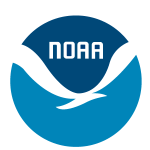- Industry: Government
- Number of terms: 30456
- Number of blossaries: 0
- Company Profile:
NOAA Coral Reef Conservation Program, National Oceanic and Atmospheric Administration, U.S. Department of Commerce
In taxonomy, a specimen selected as type specimen subsequent to the original description in cases where the original holotype, or lectotype, or all paratypes, or all syntypes are lost or destroyed, or suppressed by the Commission (Zoology).
Industry:Natural environment
One of the four nitrogenous bases in DNA that make up the letters ATGC. Cytosine is the "C". The others are adenine, guanine, and thymine. Cytosine always pairs with guanine.
Industry:Natural environment
The development of superficially similar structures in unrelated organisms, e.g., the wings of insects and birds.
Industry:Natural environment
The ozone (O3) layer in the stratosphere that gives protection to the Earth's surface because of intense absorption of harmful solar ultraviolet radiation by the gas .
Industry:Natural environment
The subsequent growth and/or reproduction of a colonized species in a new territory .
Industry:Natural environment
The World Conservation Monitoring Centre (WCMC) and NOAA maintain the Global Coral Disease Database which is populated with over 2000 records of coral diseases from approximately 155 sources. The occurrence of a disease on a coral species (or genus) was recorded for each location and date on which it was observed. A unique combination of coral species, disease, date, and location therefore constitutes a single record.
Industry:Natural environment
A feeding structure in tunicates (sea squirts) which is a type of pharyngeal gill formed into a mesh-like basket. Cilia on the gill draw water into the mouth, through the basket mesh, and out the excurrent siphon.
Industry:Natural environment
